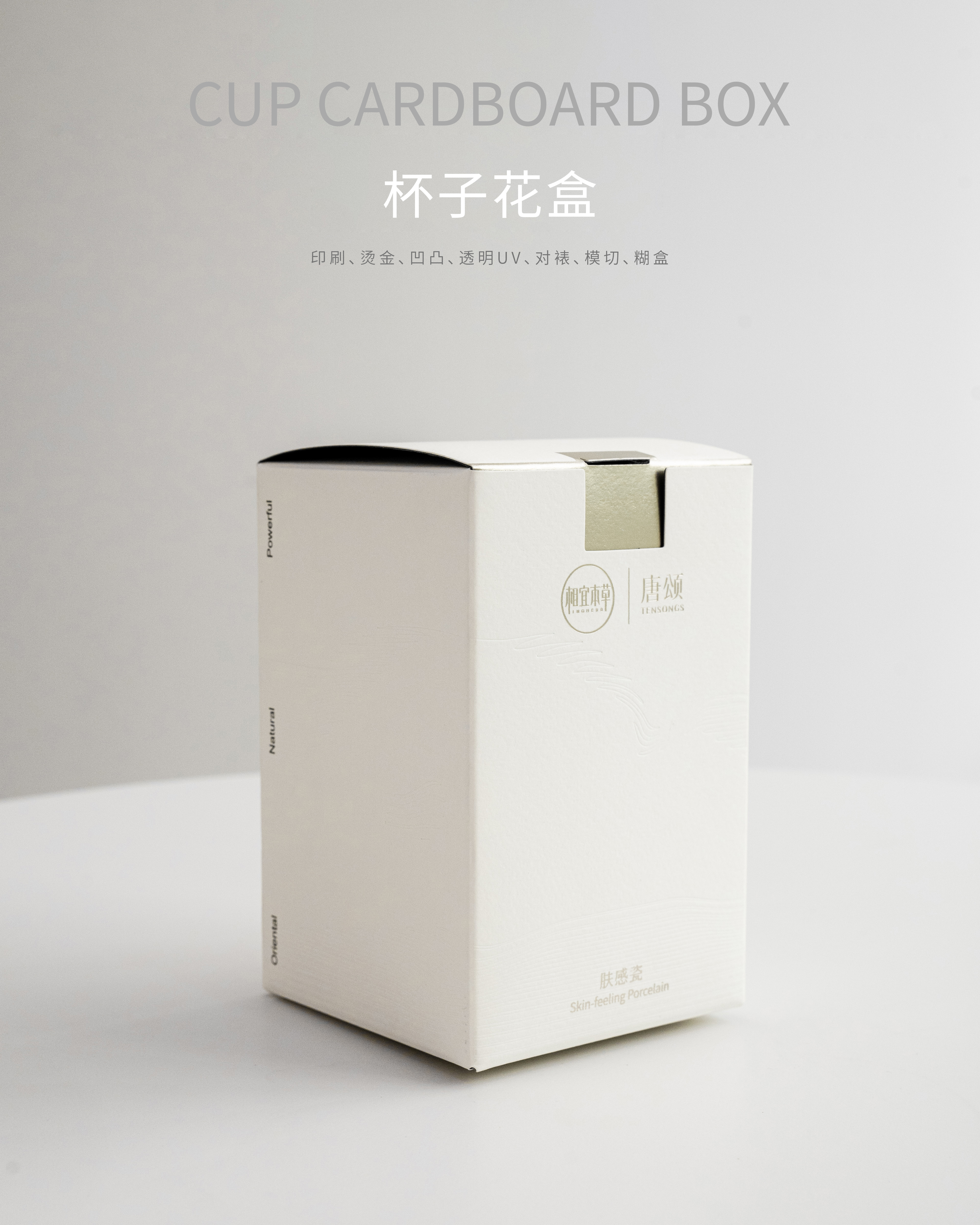
Korkealaatuiset materiaalit, kuten jäykät levyt, laminoidut pinnat ja erikoisk paperit, ovat keskeisessä roolissa luomassa vaikutelman ylellisyydestä. Ne ovat enemmän kuin pelkkää rakennetta; ne viittaavat tyylikkyyteen ja poikkeuksellisuuteen, jotka nostattavat brändin imagoa. Markkinatutkimus tukee tätä ajatusta ja paljastaa, että kuluttajat ovat valmiita maksamaan enemmän tuotteista, joiden pakkaus on ylellinen, mikä vahvistaa käsitystä siitä, että pakkaus voi merkittävästi parantaa brändin mielikuvaa. Huomionarvoiset ylellisyysbrändit, kuten Chanel ja The Estee Lauder Companies, käyttävät erottuvia ulkopintoja ja räätälöityjä tekstureita erottuaakseen ja signaaloidakseen poikkeuksellisuutta. Ymmärtämällä kuluttajakäyttäytymistä LSI-termejen, kuten "luxury packaging", "premium materials" ja "exclusive branding", avulla brändit voivat luoda sellaisen pakkausratkaisun, joka eiin ainoastaan suojaa vaan myös korottaa tuotteen koettua arvoa.
Kuluttajat näkevät usein tuotteet korkealuokkaisessa pakkaudessa arvoluonteisemmin, mikä oikeuttaa heidän valmiutensa maksaa korkeampia hintoja. Tämä käsitys on syvästi juurtunut luxukseen liittyvään psykologiaan, jossa pakkaus sanoo paljon tuotteen laadusta ja yksilöllisyydestä. Tilastot heijastavat tätä korrelaatiota, ja kyselyt osoittavat, että merkittävä osa kuluttajista yhdistää korkealaatuisen pakkauspohjan tuotteen korkeampaan arvoon. Luxusmerkit ovat asiantuntijoita pakkausdesign-strategioiden käytössä viestimään arvopropositiostaan, usein hyödyntämällä ainutlaatuisia suunnitelmia, materiaaleja ja käsityötaitoa erottuaan markkinoiden keskuudessa. Sijoittamalla "pakkaussijoitteluun" ja kehittelemällä strategisia "hintastrategioita" merkit eivät vain täytä vaan ylittävät kuluttajien odotukset, erottuen voimakkaasti kilpailukykyisissä markkinoissa.
Tuoksuviinin pakkauksessa värsepsychologia ymmärtäminen on ratkaisevan tärkeää kuluttajien päätösten vaikuttamisessa. Tuoksumarkkinoinnissa värjit valitaan huolellisesti herättämään tiettyjä tunteita ja vaikuttamaan ostokäyttäytymiseen. Esimerkiksi, sininen liittyy usein rauhallisuuteen ja hiljaisuuteen, kun taas punainen herättää passiota ja jännitystä. Nämä assosiaatiot voivat merkittävästi vaikuttaa siihen, miten kuluttajat kokevat tuoksuboksia, ja näin ollen heidän ostovalintoihinsa. Tutkimus paljasti, että värit vastaavat jopa 85 %:sta ostosten perusteluista, mikä korostaa niiden vahvaa tunnevaikutusta. Käyttämällä LSI-avainsanoja, kuten "väripsykologia", "tunnemuodistus" ja "kuluttajakäyttäytyminen", brändit voivat paremmin ymmärtää ja hyödyntää näitä periaatteita saadakseen optimoituja tuloksia. parfyymipakkaukset suunnitelmilla.
Hymykkäät elementit tuvemaan pakkaustyksissä pelottavat keskeistä roolia vahvistettaessa brändin tarinankertoa aistien kautta. Tekstuurit, kuten matonpintaiset tai kirkkaat peitteet, voivat muuttaa käyttäjän vuorovaikutusta pakkausten kanssa, lisäämällä tasoa aistimarkkinointistrategiaan. Brändit ovat tehneet tehokasta käyttöä näistä hymykkäistä tunnemuista, käyttämällä tapaustutkimuksia, jotka osoittavat, miten ainutlaatuiset tekstuurit välittävät ei vain brändin tarinan, mutta herättävät myös tunteita. Esimerkiksi Burberryn luxeksiilevyt hymykkään tekstuurin kanssa lisäävät syvyyttä niiden tarinaan, houkuttelevat kuluttajia joka kertaa kosketuksella. Kun aistimarkkinointi tulee olemaan entistä tärkeämpää brändien strategioissa, visuaalisten ja hymykkäiden elementtien yhdistelmäksi tulee keskeinen. LSI-terminoiden, kuten "aistimarkkinointi", "hymykkä brändi" ja "tuotekokemus", sisällyttäminen antaa näkökulman kehittää imerikkömielisiä ja tunteellisia sitoumuksia kuluttajille.
Molemmilla väri- ja kosketusstrategioilla painotetaan pakkausten luomista niin, että ne eivät vain sisällä tuotetta, vaan kertovat kiinnostavan tarinan, joka houkuttelee kuluttajia tutkimaan tuoksuja sekä tunteellisena että kokemuksettuona ostoksena.

Ympäristöystävälliset materiaalit ovat vallankumoussisäädännössä hajusteiden pakkausten alalla, lieventämässä ympäristöllistä syyllisyyttä ja sopeutuen kasvaviin kestävään muotiin liittyviin suuntauksiin. Merkkejä käyttävät yhä enemmän kierrätettyä paperia ja makuuaineista valmistettuja elokuvia perinteisten pakkausmateriaalien korvaamiseksi. Esimerkiksi sienipohjaiset pakkauspinnat ja maissista johdetut bioplastit osoittavat innovatiivisia lähestymistapoja kestävän pakkausmallin parissa. Tilastot näyttävät, että kuluttajat priorisoivat kestäviä tuotteita entistä enemmän, mikä vaikuttaa ostoskäyttäytymiseen kohti vastuullisia merkkejä. Teollisuusraporteiden mukaan kestävälle pakkausratkaisulle on ennustettu kasvu, mikä korostaa ekoystävällisten käytäntöjen tärkeyttä (lähde: Grand View Research). Useat hajusteiden merkit ovat ottaneet kestävät pakkausratkaisut käyttöön, kokeneet positiivisia markkinavaikutuksia ja lisääneet kuluttajien uskoa.
Uudelleentäytettävät pakkausjärjestelmät tarjoavat tehokkaan keinon kannustaa toistuvia ostoksia samalla, kun jätteiden määrä vähenee huomattavasti. Uudelleentäyttöasemioiden tai -karsintojen tarjoamisella merkit voivat kehittää kuluttajien uskollisuutta ja edistää ekologista käyttäytymistä. Markkinatutkimuksen mukaan uudelleentäytetyt hajuvedet herättävät yhä enemmän mielenkiintoa kuluttajilta, jotka arvostavat jätteen vähentämistä ja kestävyyttä. Tämä suuntaus parantaa ei vain merkin mainetta, vaan lisää myös kuluttajien osallistumista. Merkit kuten Mugler ja Fenty ovat onnistuneesti ottaneet käyttöön uudelleentäyttöjärjestelmiä, mitä kautta osoitetaan kasvavaa kiinnostusta tällaisiin kestäviin innovaatioihin. Kun uudelleentäyttövaihtoehdot muuttuvat yleisemmiksi, kuluttajan kysyntä uudelleentäytto-ohjelmille todennäköisesti kasvaa, mikä kannustaa merkkejä integroimaan nämä järjestelmät tuotearvioihinsa ja hyödyntämään ekoystävällisiä suuntauksia.
Kerrostetun avaamiskokemuksen luominen on olennaisen tärkeää niille merkeille, jotka haluavat parantaa asiakastavoittamistaan ja hyödyntää sosiaalisen median mainontaa. Nämä hetket suunnitellaan siten, että ne lisäävät kuluttajien iloa ja kannustavat jakamaan niitä platformeilla kuten Instagram ja TikTok. Viimeaikaisen tiedon mukaan 62 % kuluttajista vaikuttaa sosiaalisen median postaukset kun he ostavat kauniintarvikkeita ja hajuaineita. Merkit kuten Glossier ja Lush ovat onnistuneet suunnittelemaan avaamisprosessinsa niin, että ne suurettavat sosiaalisen median osallistumista. Silmien kiinnittyväksi tehty vuorovaikutteinen pakkaus helpottaa odotuksen pohjimmiltaan perustuvaa kokemusta, jota asiakkaat tykkäävät jakaa verkoissa, mikä parantaa brändin näkyvyyttä ja houkutusta.
Estetiikka-orientoitu pakkaus voi luoda viralityyppistä markkinointihymyä, erityisesti digitaalisilla alustoilla, jotka tunnetaan visuaalisen sisällön puolesta. Brandit, jotka sijoittavat näkyvään ja estetiikkaan vetoavaan pakkaukseen, kohtaavat usein lisääntyneitä digitaalisia osallistumisindeksejä ja myyntiparistoja. Esimerkiksi huomaamaton hajuvedelöpullo voi kiinnittää Instagram- ja TikTok-käyttäjien huomiota, mikä voi johtaa viralityyppiseen markkinointi-ilmiöön. Tutkimus osoittaa, että estetiikaltaan kauniit tuotteet jaettavat useammin, koska ne herättävät kuluttajien halua kauneuteen ja uudisteluun. Brandit kuten Jo Malone ovat onnistuneet hyödyntämään tätä psykologiaa edistääkseen kuluttajien jakamiskäyttäytymistä, muuttamalla heidän mielenkiintoisesta visuaalisuudesta mittaukselliseksi markkinointionnistukseksi. Estetiikan ja viralityyppisen markkinoinnin leikkauspiste on tehdä jokainen tuote enemmän kuin vain ostopäätös, vaan jakojärjestelmä kokemus.
Suojaverkit ovat keskeisiä tuotteen kokonaisuuden ylläpitämiseksi kuljetuksen aikana, toimien suojana mahdollisilta vahingoilta. Korkealaatuiset verkit, kuten mukautettu muovataita tai muovattu puupulpit, auttavat pitämään tuotteet turvassa ja vakiona pakkaustessaan, varmistamalla, että ne saapuvat kuluttajiin koskemattomina. Tilastot osoittavat, että 75 % kuluttajista katsoo merkkinä luotettavammaksi, jos sen tuotteet saapuvat vahingoton, korostaen tehokkaan pakkausratkaisun merkitystä luottamuksen rakentamisessa. Merkit kuten Apple ja Samsung ovat onnistuneet toteuttamaan vahvistavia pakkausratkaisuja, jotka suojelevat tuotteitaan kuljetuksen aikana, vahvistamalla maineensa laadusta ja luotettavuudesta.
Saavuttaminen tasapaino houkuttelevan suunnitelmiston ja käytännöllisen toiminnallisuuden välillä pakkaustyössä on yksi teollisuuden suurimmista haasteista. Vaikka kauniin näköinen pakkaus voi parantaa brändin kuvaa, se täytyy myös suojella sisältöjään tehokkaasti säilyttääkseen kuluttajien luottamuksen. Tutkimustuloksia osoittaa, että 82 % kuluttajista arvostaa tuoteturvallisuutta koskemattomuus enemmän kuin estetiikan houkuttelevuutta, mutta he arvostavat sitä, kun brändit onnistuvat yhdistämään molemmat tehokkaasti. Yritykset kuten Glossier ovat oppineet hallitsemaan tätä tasapainoa ottamalla käyttöön kestäviä ja visuaalisesti houkuttelevia materiaaleja, jotka tarjoavat myös suojelun, mikä heijastaa strategista brändausta, joka vastaa nykyisten kuluttajien odotuksia. Pyrkimys tähän tasapainoon on olennainen osa brändien menestymistä nykyisessä kilpailullisessa markkina-tilanteessa.
Luxuspakkaus korostaa brändin kuvaa viestimällä sofistikoitumista ja yksilöllisyyttä, mikä puolestaan vahvistaa kuluttajien mielikuvia ja valmiutta maksaa korkeampia hintoja.
Värit herättävät tunteita, jotka voivat vaikuttaa ostopäätöksiin, kun taas pakkausten tekstuurit vahvistavat brändin tarinankertoa ja aistisen kokemuksen, parantamalla kuluttajien osallistumista.
Ekoympäristöystävälliset materiaalit vähentävät ympäristövaikutuksia ja sovittelevat kuluttajien kestävien tuotteiden suosion mukaan, kannustavat vastuullista ostokäyttäytymistä.
Hyvin suunnitellut avaamiskokemukset ja estetiikka-pakkaus kannustavat jakamaan niitä Instagramissa ja TikTokissa kaltaisilla alustoilla, lisäämällä brändin näkyvyyttä ja kuluttajien osallistumista.